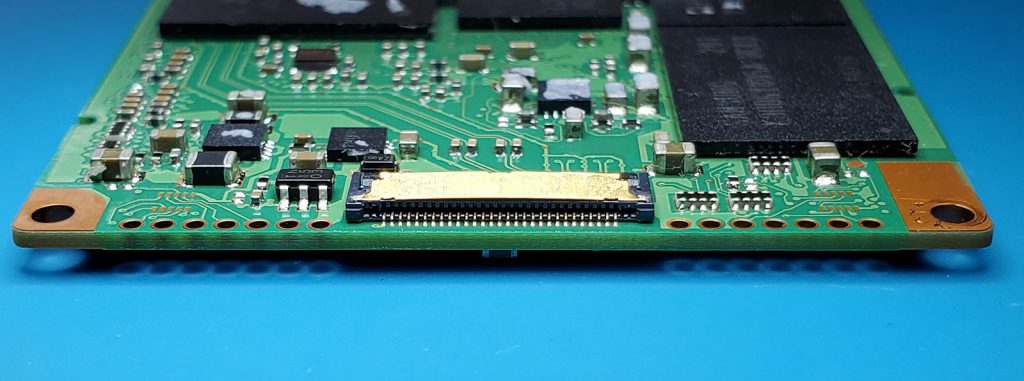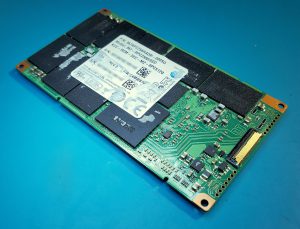
Some “ultraportable” laptops, particularly Sony Vaio Z-series models from around 2010, are equipped with an unusual type of solid state drive, which is actually two SSDs in one. With these drives, each side of the PCB houses a distinct SSD, which both share a single 29-pin (15mm) LIF connector to connect both devices to the motherboard via ribbon cable, and are configured out of the box in a RAID-0 configuration to be used together as one larger drive.
 Samsung developed these SSDs especially for use in thin, lightweight devices before the now-common M.2 form factor was introduced. Though these drives technically use a SATA interface at their core, they can be troublesome to work with due to the uncommon connector, and can even cost wasted time and money since it’s not immediately obvious that most commonly available LIF adapters aren’t compatible, as they’re for a different, 24-pin LIF connector most often used by some Apple MacBook SSDs.
Samsung developed these SSDs especially for use in thin, lightweight devices before the now-common M.2 form factor was introduced. Though these drives technically use a SATA interface at their core, they can be troublesome to work with due to the uncommon connector, and can even cost wasted time and money since it’s not immediately obvious that most commonly available LIF adapters aren’t compatible, as they’re for a different, 24-pin LIF connector most often used by some Apple MacBook SSDs.
These RAID SSDs include 128GB (2x64GB), 256GB (2x128GB), and 512GB (2x256GB) variants. Some model numbers include:
- Samsung MZRPA128HMCD
- Samsung MZRPA256HMDR
- Samsung MZRPC128HACD
- Samsung MZRPC256HADR
- Samsung MZRPC512HAFU
As a result of this unusual configuration, data recovery for these Samsung LIF RAID drives involves imaging both sides separately and then rebuilding the RAID to extract the data. At Blizzard Data Recovery, we have the tools and experience to read and assemble these unusual two-sided RAID SSDs.
Learn more about hard drive RAID recovery.
Have a more conventional SSD? We’ll also recover your SATA SSD!